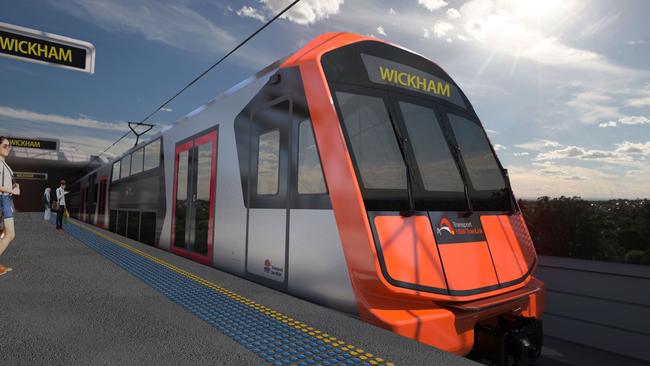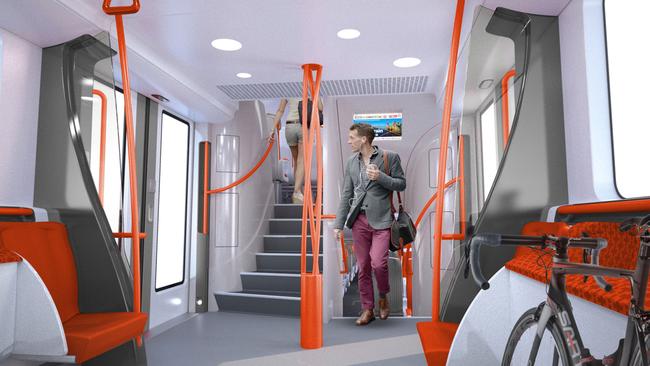Semirural residents pay now for past mistakes of governments to plan for population growth
ONCE the second airport is up and running major road and rail corridors like the M9 will be essential to its success but it's the semirural residents who chose to escape the city who will pay for the successive failure of governments and planners.
Opinion
Don't miss out on the headlines from Opinion. Followed categories will be added to My News.
WE call my parents’ house the “country retreat”. For decades it’s provided a haven, not far from the historic village of Cobbitty and the rural township of Camden, where the blocks are acreage and gardens are prize-winning.
And as the land east of these villages has changed hands from farmer to developer and houses have sprung like mushrooms across the landscape, the trip from the city has become an unpredictable grind.
On a good run it can take 50 minutes. On a bad day it’s two hours.

That the land must be released to meet the needs of Sydney’s ballooning population is not the question.
It’s that the huge growth has occurred without any provision for how all these new residents are meant to get around.
What planet are planners and governments on then, when new suburbs spring up without any provision for the rail and road corridors essential to provide locals a good quality of life and the economy the means to keep moving?
Take Oran Park, for example, a few kilometres south of the Badgerys Creek airport site. In the past four years 3000 new dwellings have become home for 8000 residents.
Yet never was a major road or rail corridor set aside to transport its residents.

Now planners need to tunnel a rail line underground to Oran Park at great expense to avoid knocking down brand new houses.
There’s no doubt that once the second airport is up and running major road and rail corridors like the M9 are essential to its success.
Yet the current proposed corridor of the M9 Orbital makes semirural residents who have chosen to escape the city pay for the mistakes and lack of foresight of successive governments and planners.
Nightmare commutes are an everyday reality
WORKERS from Campbelltown, Camden and Wollondilly are being forced to travel more than twice as far to get to their jobs than those living in inner Sydney.
More than 300,000 residents leave Western Sydney each day for work.
The 125,644 people living in Macarthur — one of the country’s fastest-growing local government areas — travel an average 25.8km to work.
Those living in Greater Western Sydney travel 18.1km while the rest of Sydney travels only 11.1km, according to the figures based on Census data.
“We need to get serious about job creation — and that means … strategies aimed at helping fuel more employment centres in Western Sydney closer to where the majority of Sydneysiders will live within the next 15 years,” Western Sydney Leadership Dialogue chairman Christopher Brown said.
Mr Brown said that the promised North-South Rail Link and Sydney Metro West would help — but only if links are extended to the southwest, otherwise people “will be left to spend hours every day stuck on the M5 or jumping from train to train”.
People told their homes not at vital as progress
THE developer of Oran Park has some advice for the hundreds of semirural families whose homes will be bowled over by the path of the proposed M9 — the needs of Sydney are more important.
“The road goes through my own house,” said Mark Perich, whose family built the massive Oran Park Town, which in the past four years has become home to 8000 new residents.
Mr Perich (pictured) lives in his father’s original dairy farming house, which would be compulsorily acquired under Transport for NSW plans to build a 200m-wide road and freight rail corridor from Box Hill to Douglas Park in the south.
“The idea of someone acquiring your land and the disruption is really painful,” he said. “But you have to get on with life. The needs of Sydney are more important than my individual needs.”
Liberal member for Hume and Minister for Law Enforcement Angus Taylor said he is opposed to much of the proposed path of the road because it destroys rural land.
Putting us on track to house woe solution
FAST rail is the key to solving Sydney’s housing crisis, according to an independent think tank report that argues an additional 40,000 homes could be built across NSW by opening up land around rail corridors.
The Committee for Sydney has urged the NSW government to consider using “off the shelf” fast rail technology to improve cumbersome rail connections between Sydney, Gosford, Newcastle and Wollongong, and ease pressure on Sydney’s housing market.
The committee’s report called for the establishment of a “Sandstone Mega-Region” of six cities rather than a metropolis of three cities. This would link Newcastle, Gosford and Wollongong to Greater Sydney with 200km/h fast rail connecting each centre.
“Within 15 years of the rail service improvements, over 40,500 dwellings would be added to locations outside of metropolitan Sydney,” the report noted, following a year-long investigation involving 40 different organisations.
Researchers forecast that by 2036 Wollongong could have an extra 10,000 dwellings, Gosford 9000 and Newcastle 8000 because of improved rail access, also generating thousands more local jobs.


